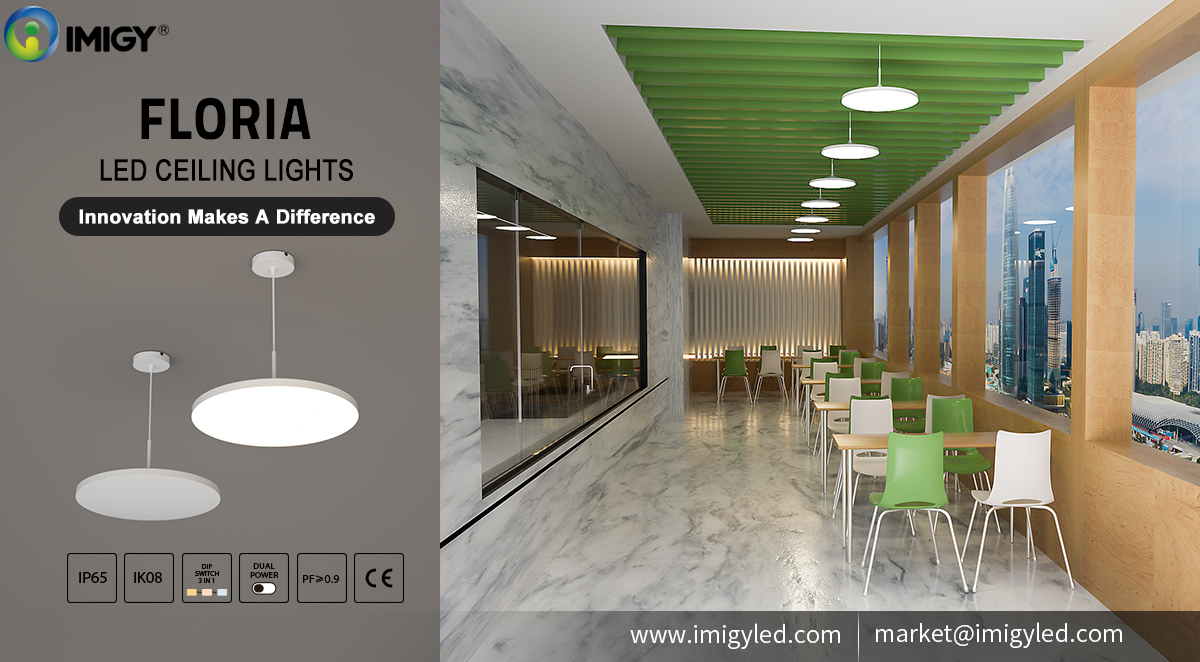

In the modern era of smart technology, the integration of Internet of Things (IoT) into architectural lighting has transformed the way we interact with our environments. Smart ceiling lights, powered by IoT-enabled systems, offer more than just illumination; they provide enhanced functionality, energy efficiency, and personalized control. This article explores the innovative features of IoT-enabled architectural lighting systems, their applications in various settings, and how they can transform spaces into intelligent, adaptive environments.
IoT-enabled smart ceiling lights allow users to control lighting remotely via smartphones, tablets, or voice assistants. This capability enables users to adjust brightness, color temperature, and even the color of the lights from anywhere, making it incredibly convenient to set the perfect ambiance for any occasion. Automation features allow users to schedule lighting scenes, ensuring that lights turn on or off at specific times or in response to certain triggers, such as sunrise or sunset.
IoT-enabled lighting systems are designed to optimize energy consumption. Sensors integrated into the lights can detect occupancy and adjust the brightness accordingly, turning off or dimming when no one is in the room. This not only reduces energy waste but also lowers electricity bills and contributes to a more sustainable environment.
Smart ceiling lights can be integrated with other smart home or building systems, creating a cohesive and interconnected environment. For example, they can work in tandem with smart thermostats, security cameras, and voice assistants to create a fully automated smart space. This integration enhances user convenience and allows for more sophisticated automation scenarios.
In residential settings, IoT-enabled smart ceiling lights can transform a home into a personalized, energy-efficient living space. Homeowners can create different lighting scenes for various activities, such as movie nights, dinner parties, or relaxation. The ability to control lights remotely and automate lighting schedules adds a layer of convenience and security, allowing residents to manage their home environment even when they are away.
For commercial buildings, IoT-enabled lighting systems offer significant benefits in terms of energy management and operational efficiency. Businesses can monitor and control lighting across multiple locations from a central dashboard, ensuring optimal energy usage and reducing maintenance costs. The integration with occupancy sensors and daylight harvesting systems further enhances energy savings by adjusting lighting based on natural light availability and room occupancy.
In hospitality and retail environments, smart ceiling lights can enhance the guest experience and drive engagement. Hotels can use IoT-enabled lighting to create welcoming atmospheres in lobbies and guest rooms, while retailers can use dynamic lighting to highlight products and create visually appealing displays. The ability to adjust lighting in real-time allows businesses to adapt to changing customer needs and preferences.
When selecting IoT-enabled lighting systems, it is crucial to ensure compatibility with existing smart home or building infrastructure. Look for systems that support standard communication protocols such as Zigbee, Z-Wave, or Wi-Fi to ensure integration with other smart devices.
The success of an IoT-enabled lighting system depends largely on its ease of use. Choose systems that offer intuitive mobile apps or web interfaces, allowing users to easily control and automate their lighting. Voice control integration with popular assistants like Amazon Alexa or Google Assistant can further enhance user convenience.
As with any IoT device, security and privacy are paramount. Ensure that the lighting system you choose has robust security features, such as encrypted communication and regular firmware updates, to protect against potential cyber threats. Additionally, consider the privacy implications of data collection and sharing, and choose systems that prioritize user privacy.
Most IoT-enabled lighting systems come with easy-to-follow setup guides. Typically, you will need to download a companion app, connect the lights to your Wi-Fi network, and follow the on-screen instructions to configure your lighting preferences. Some systems may also require the installation of a hub or bridge to facilitate communication between the lights and your smart devices.
In many cases, you can retrofit your existing light fixtures with IoT-enabled bulbs or modules. However, for more advanced features like dimming or color changing, you may need to ensure that your fixtures are compatible with these functionalities. It is always a good idea to consult with a professional electrician if you are unsure about compatibility.
The cost savings of IoT-enabled lighting systems can be significant, especially in commercial settings. By optimizing energy usage through occupancy sensing and daylight harvesting, businesses can reduce their energy consumption by up to 70%. Additionally, the ability to remotely monitor and manage lighting systems can lower maintenance costs and improve operational efficiency.

It is recommended that you upgrade the latest browser
 Chrome
Chrome Firefox
Firefox Edge
Edge